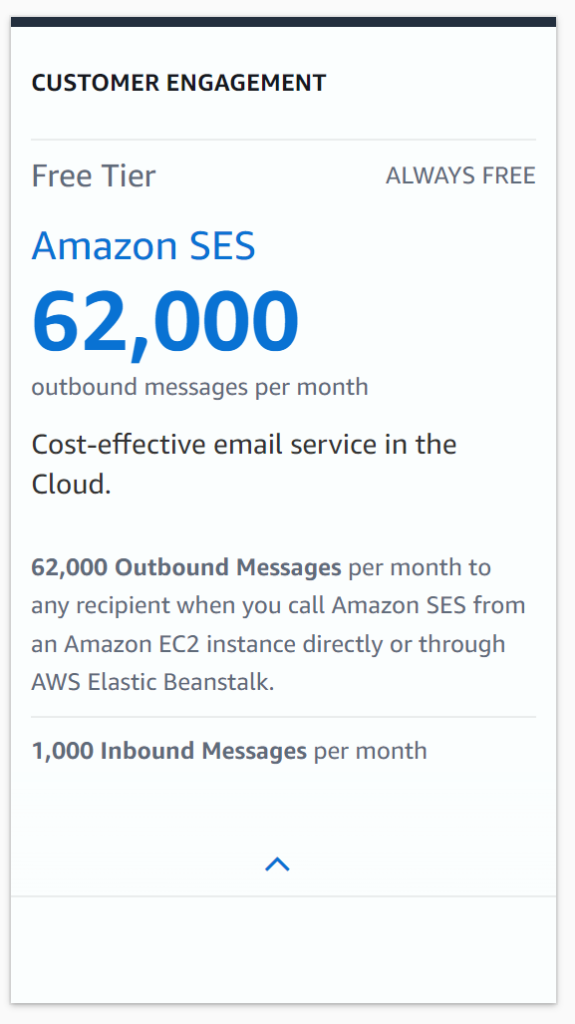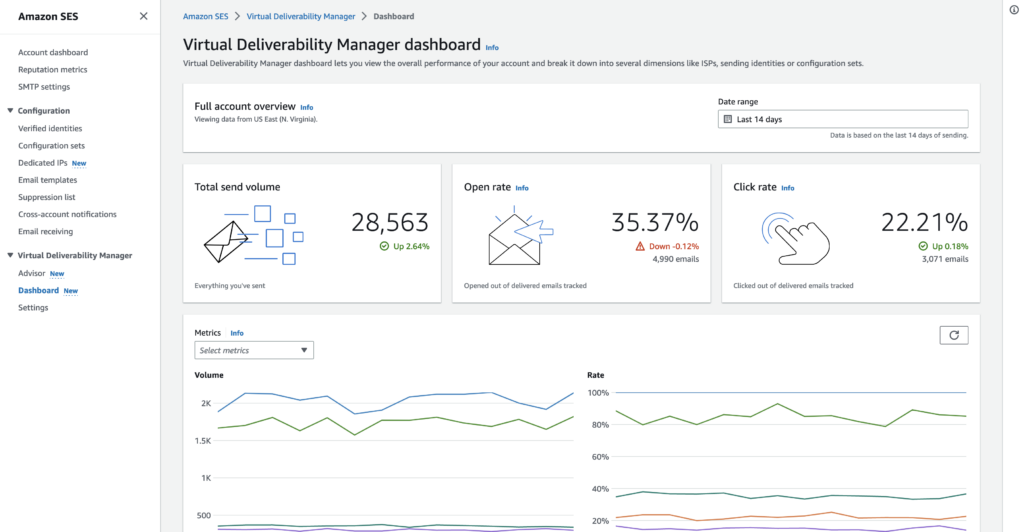
AWS has told customers of its Simple Email Service that the existing indefinite free tier, which included 62,000 messages per month if sent via EC2 or Elastic Beanstalk, will be reduced to 3,000 messages per month for one year only, from 1st August 2023.
While that sounds substantial, the base price of 62,000 messages is only $6.20, so this may be more about attempting to curb use of free email, than raising extra revenue.
Simple Email Service (SES) is designed for programmatic and bulk emailing and is popular both for reliability and price – particularly since AWS offers a generous “always free” tier which includes 62,000 outbound messages per month (and 1,000 incoming) when sent via a virtual machine on EC2 (Elastic Compute Cloud) or the Elastic Beanstalk application auto-scaling service.

That is now to change, and the company said in an email to customers that “we are … lowering the free tier limit for outbound messages and reducing the duration of the SES free tier to 12 months.”
The new limits are 3,000 outbound messages per month, from any source, and including inbound and outbound. “We are not able to offer an option to remain on the previous SES free tier model,” the company added.
The Virtual Deliverability Manager, which offers a dashboard analysing delivery problems and making recommendations, is now included in the free tier. Outside the free tier, this costs $0.07 per 1000 emails with 5,000 free queries a month – so the saving on 3,000 emails will be invisible. Virtual Delivery Manager was introduced in November 2022.

SES has always been keenly priced. The current price is $0.10 per 1,000 emails, with extra costs for attachments and data transfer of attachments, and for add-ons like use of dedicated IP numbers if required.
The context for this though is that email outside AWS is a free service aside from infrastructure costs, and Linux distributions generally include free email software such as Exim and Postfix. SES can even be expensive for some. “At any real scale, SES is very expensive compared to managing your own sending platform. Back when we were sending just 31M messages per day, our 3 year costs for self-managed email sending platform, including servers, software, and data center costs was just $325,000. SES costs for the same was $3,933,947.88 — 12x our costs at the time,” said a comment on Reddit last year.
The consequence for email users (that is, almost everyone) of this low cost is that messages are a conduit for spam, malware, and phishing attempts. “Malware is largely distributed via email” stated a Verizon Data Breach Investigations report earlier this year adding that “Email as a vector isn’t going away any time soon. The convenience of sending your malware and having the user run it for you makes this technique timeless.”
AWS does state that: “If we determine that the email you send is of poor or questionable quality (for example, if it has high bounce or complaint rates, or if it contains unsolicited or malicious content), we reserve the right to pause your ability to send email,” but by then it may be too late.
Making SES more expensive might have some beneficial side-effects, if it were not for the likes of botnets and compromised Microsoft 365 accounts which give criminals plenty of other free options.
